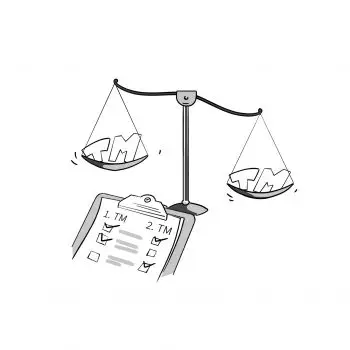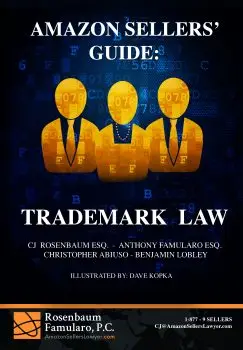What is the likelihood of confusion in Trademark Infringement?
A trademark is a symbol, phrase, or some other device that distinguishes ownership of a product or service.
Federal law governs trademarks, and they are described in section 32(1) of the Lanham Act. Common law trademark rights are acquired automatically when a business uses a name or logo in commerce and are enforceable in state courts.
Often, trademarks are used a sign of quality. Customers who buy products from Amazon third-party sellers often rely on trademarks when making purchases. The trademark indicates that they will be receiving quality items.
When it comes to AMZ resellers, trademark infringement occurs when Amazon 3rd party sellers use unauthorized & improper business names that are identical or similar to that used by another seller.
If a seller uses your trademark or something similar to your trademark to confuse the buyer, there may be trademark infringement. The test is known as a “likelihood of confusion”.
What is a “likelihood of confusion”?
 According to Section 1125 (a) of the Lanham Act, a “likelihood of confusion” is when the consumers viewing the mark would most likely assume that the product or service it represents is associated with the source of a different product or service.
According to Section 1125 (a) of the Lanham Act, a “likelihood of confusion” is when the consumers viewing the mark would most likely assume that the product or service it represents is associated with the source of a different product or service.
The Act also states that merchant sellers shall be liable to a civil action to any person that is likely to be damaged by the Amazon marketplace seller or Amazon marketplace reseller’s trademark infringement.
To bring an action under the law, actual damages need not be shown. You do not have to show that you actually lost money. You must merely show the likelihood of damages.
How is ‘confusion’ determined?
To determine ‘confusion’ under the Lanham Act, the court uses the Polaroid Test. This test was created by a court in a case called Polaroid Corp. v. Polara Electronics Corp. There are 8 factors of the Polaroid Test which include:
- The strength of the plaintiff’s mark
- The similarity of uses
- The proximity of the products
- The prior owner may expand into the domain of the other
- Actual confusion
- Defendant’s reasons for using the plaintiff’s forbidden/restricted products
- Quality of the junior user’s product, such as used or sold as new
- Sophistication of consumers
You do not need to show all 8 factors. The courts will focus on the potential to confuse consumers.
What if I get sued or sue someone else for false advertising based upon use of a Trademark?
There are three potential remedies that can be ordered in a false advertising case:
- Injunctive Relief
- Corrective Advertising
- Damages
Injunctive Relief
Definition: When a court orders someone to do something or to stop doing something.
This may be granted when the person suing demonstrates confusion because of false or deceptive advertising. Injunctive relief can also be granted if “irreparable harm” has been inflicted. That may include a decrease in sales that cannot be completely the fault of fake advertising.
It is virtually impossible to prove that sales will be damaged. The party suing only has to establish that there’s a relationship between a decline in its sales and a competitor’s fake advertising.
Corrective Advertising
Definition: “The messages that a business is ordered to run in consumer ads by the Federal Trade Commission in order to right an incorrect impression that its previous ads have given”.
The defendant will have to proactively attempt to undo the damage they caused against the plaintiff in a public and easily accessible way.
Damages
Under Section 1117(a) of the Lanham Act, the recovery of damages could include:
- The defendant’s profits
- Any damages sustained by the plaintiff
- The costs of the action.
The court will decide what, if any, profits and/or damages should be awarded to the plaintiff.
To collect damages, the party suing has to show that some consumers were actually deceived. They may also have to show that the defendant used the false advertising for products not as described and in bad faith.
 For more information about trademark law, download a copy of our free book:
For more information about trademark law, download a copy of our free book:
Amazon Sellers’ Guide: Trademark Law
By: CJ Rosenbaum Esq., Anthony Famularo Esq., Christopher Abiuso, and Benjamin Lobley
This book focuses on informing sellers about protecting their brand and the steps that can be taken to prohibit infringers. We discuss both trademark and copyright law, the two primary ways to protect your brand.
Without registering a trademark, your ability to enforce your intellectual property rights is limited to your geographic area. In contrast, if you register with the USPTO, your trademark will be extended to the entirety of the US.
